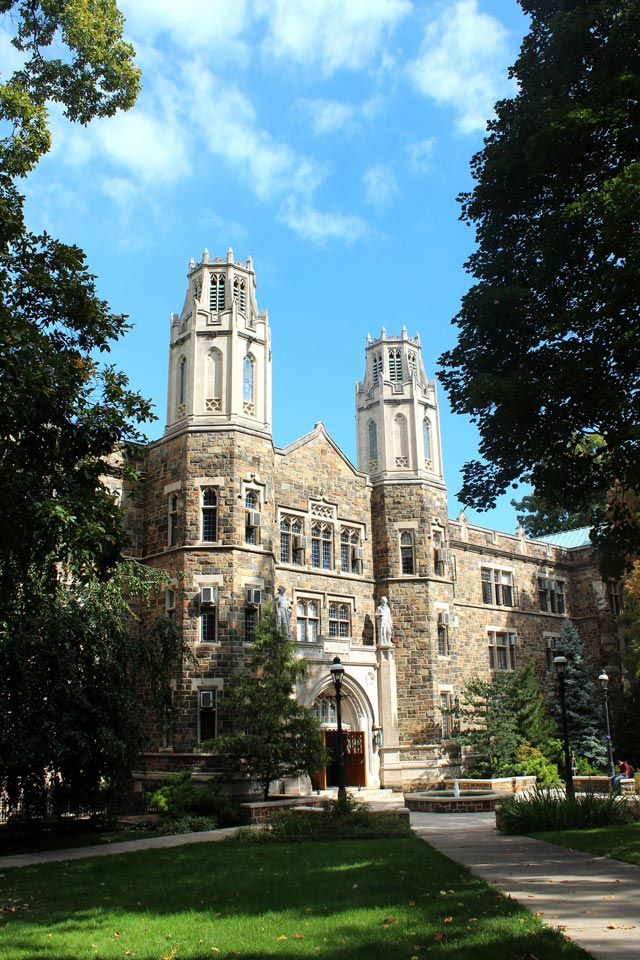Tailoring membrane pores to achieve greener chemical purification and better solar cells
Mark Snyder, self-confessed traffic cop in the nano world, spends his days trying to make molecules – the right molecules – jump through hoops.
Snyder, assistant professor of chemical engineering, assembles and templates nanoporous membranes, or “sieves,” that can separate molecules of a specific type out from a mixture of many.
Just as the air filter in a home-cooling system trap particles of dust while allowing air through, Snyder’s membranes grant passage to some molecules but not others.
In the Porous and Functionalized Nanomaterials Lab, Snyder, who earned a B.S. in chemical engineering from Lehigh in 2000, works with students to create spherical particles of silica measuring 5 to tens of nanometers. They deposit them in an ordered array onto various substrates, leaving as little space as possible between particles. They cover the particles with carbon, titania or zirconia, filling the pores in between, then etch away the particles.
The result is a “fossil,” a replica of the original particle pattern, with spherical cavities interconnected with small pores whose size is dictated by the contact between the original particles.
Snyder’s goal is to fashion these fossils into membranes whose pore size, topology, connectivity and function allow him to manipulate molecules, separate them or control their reactions.
Greater control of molecular behavior, he says, could lead to applications in energy, medicine and chemical production.
Using membranes to separate molecules, for example, could reduce the energy consumed by the distillation process used to purify chemicals.
“Distillation takes advantage of differences in the various boiling points of the components in a mixture. But it requires massive amounts of energy to achieve these boiling points and separate products.”
Membranes whose pores all contain identical molecular dimensions, says Snyder, could separate molecules of varying sizes.
“Picture a giant sieve,” says Snyder, “that separates beach balls from golf balls because the pores in the sieve are too small for the beach balls to go through.”
The pores in a membrane could also be tuned with a specific functionality that attracts only one type of molecule from a mixture.
Control over these properties gives engineers the ability to transport a molecule according to its size or its tendency to adsorb to the membrane.
“Membranes or thin porous films with tuned properties can separate molecules without the need for excessive energy input,” says Snyder. “The membrane can be organic or inorganic, and the separation can occur in a gas or liquid phase, as long as the membrane has appropriately tuned properties.”
One challenge is to create ultrathin membranes that accelerate the separation process by allowing molecules to diffuse rapidly through the pores.
“Molecules pass through a molecular filter at a rate that is inversely proportional to the thickness of the filter,” says Snyder. “So instead of a 10-micron-thick filter, you would prefer something several orders of magnitude thinner.
“Polymeric membranes have a trade-off between separation and permeance. A highly selective membrane often has low permeance, while a highly permeable membrane has little separation. Polymeric membranes also tend to be sensitive to thermal or chemical degradation.
“Inorganic materials show promise for achieving a better balance – if we can control the thickness and create defect-free membranes.”
Snyder’s work in this area is funded by the American Chemical Society.
In a DOE-supported project, he is working to develop porous materials with tunable pore size and pore topology that have organic and inorganic surface functionality and can catalyze a variety of reactions. His goal is to convert biomass to high-value chemicals and liquid fuels.
“By tailoring the properties of the pores in these multifunctional catalysts, we hope to improve the selectivity with which various products are made and to limit undesired side reactions,” he says.
In another project, Snyder and Jim Gilchrist, associate professor of chemical engineering, are seeking to improve the efficiency with which dye-sensitized solar cells (DSSCs) convert sunlight into electricity. In two decades of research, he says, efficiency has improved modestly, from 8 to 12 percent.
The two researchers are tailoring the porosity of a conductive anode and integrating it with microlens technology to increase the distribution of light to the dye molecules.
“We have observed a nearly 30-percent improvement in efficiencies with some of our approaches,” says Snyder. “We have a patent pending, and we’ve launched a start-up, PAower Optics, LLC, to develop our technology.”

